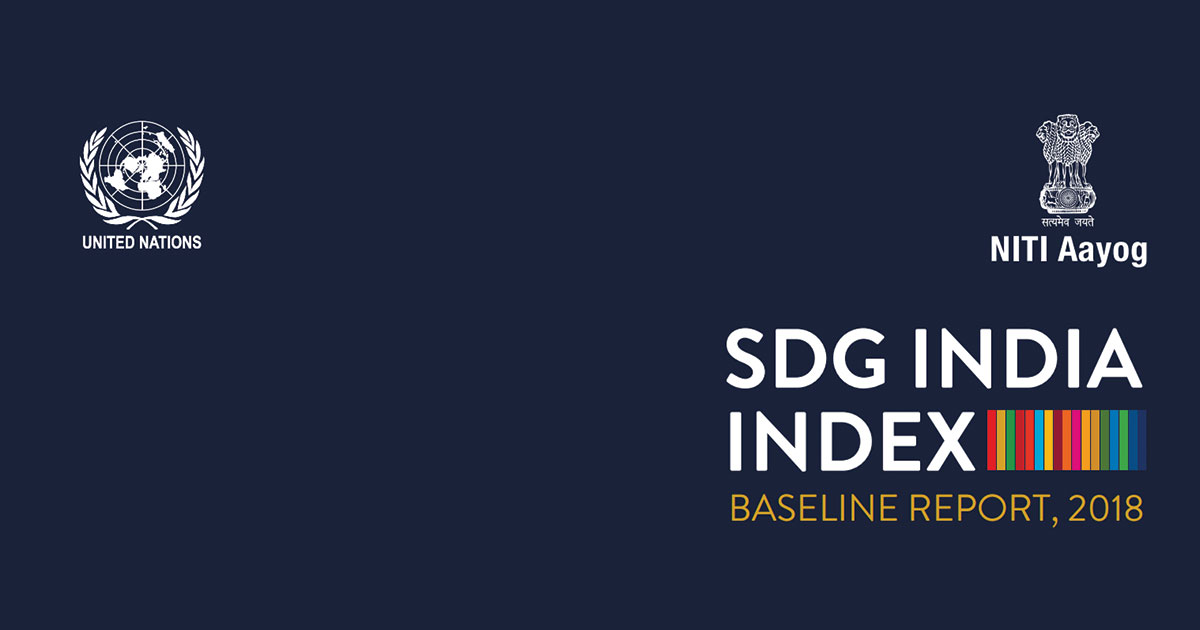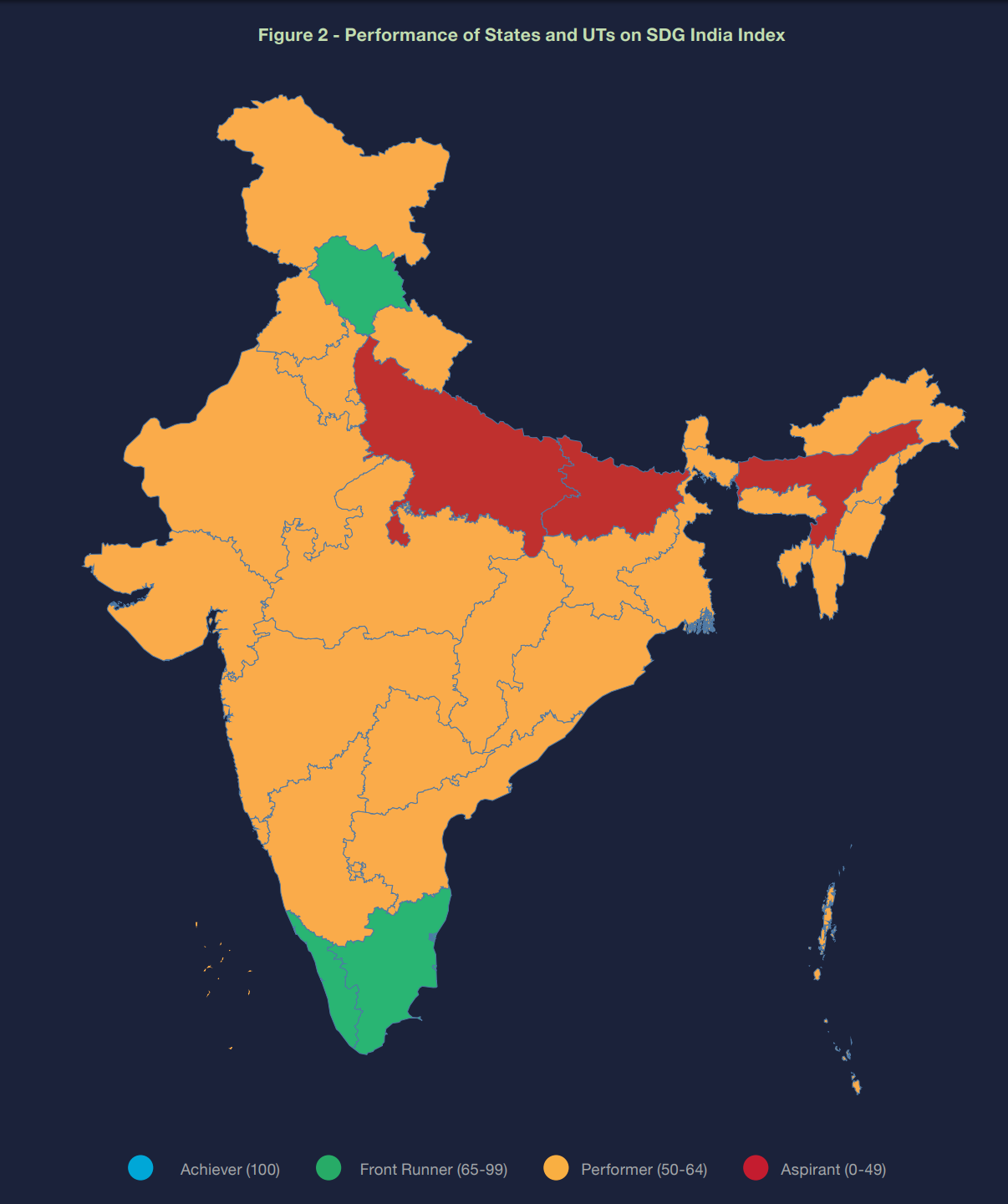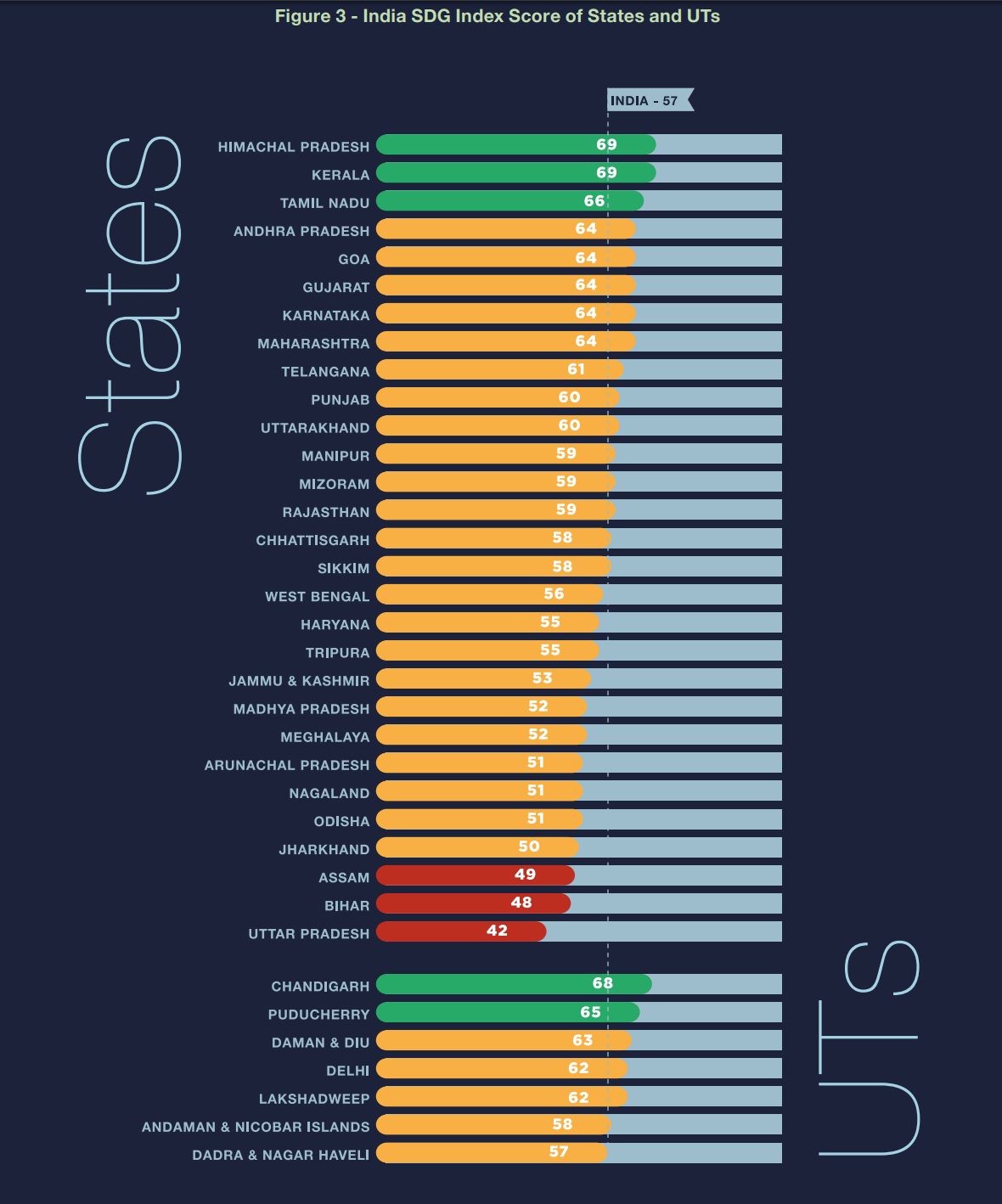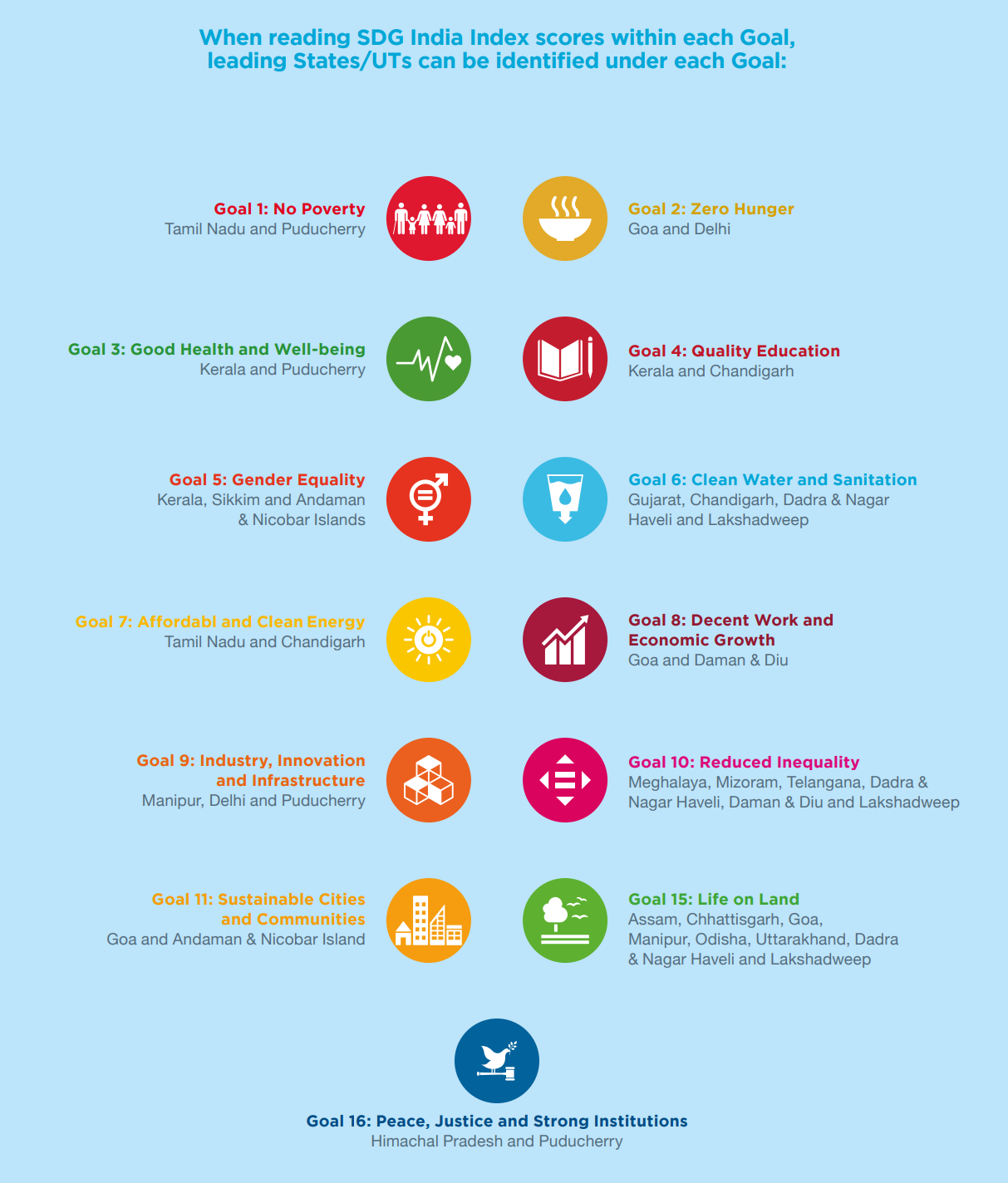Now Reading: India SDG Index Report 2018 released: Kerala & Himachal Top while UP & Bihar poor Performers
-
01
India SDG Index Report 2018 released: Kerala & Himachal Top while UP & Bihar poor Performers

India SDG Index Report 2018 released: Kerala & Himachal Top while UP & Bihar poor Performers
The Sustainable Development Goals (SDGs) are an ambitious commitment by world leaders which set out a universal and an unprecedented agenda which embraces economic, environmental and social aspects of the wellbeing of societies.
The Prime Minister of India in his statement at the Sustainable Development Summit in New York on 25 September 2015 strongly affirmed India’s commitment to Agenda 2030 and the SDGs. He drew attention to the fact that we live in “an age of unprecedented prosperity, but also unspeakable deprivation around the world” and pointed out that “much of India’s development agenda is mirrored in the Sustainable Development Goals”. Further, he has reiterated the importance of the SDGs at global level, such as at G-20 meetings. The Parliament of
India has taken exemplary initiatives to propel the SDG agenda forward. The Speaker of the Lok Sabha, the Lower House of the Parliament of India, has organised briefing sessions on the SDGs for Members of Parliament, including bringing together legislators from South Asia and other BRICS nations to collectively work towards the realisation of these goals. India has provided strong endorsement to the SDGs, giving a considerable fillip to Agenda 2030.
Given the importance accorded by the Government of India to achieving SDGs, NITI Aayog decided to estimate the progress through a single measurable index that would serve as an advocacy tool and trigger action at the State level.
NITI Aayog has constructed the SDG India Index spanning across 13 out of 17 SDGs (leaving out Goals 12, 13, 14 and 17). The Index tracks the progress of all the States and UTs on a set of 62 Priority Indicators, measuring their progress on the outcomes of the interventions and schemes of the Government of India. The SDG India Index is intended to provide a holistic view on the social, economic and environmental status of the country and its States and UTs.
The SDG India Index is an aggregate measure which can be understood and used by everyone—policymakers, businesses, civil society and the general public. It has been designed to provide an aggregate assessment of the performance of all Indian States and UTs, and to help leaders and change makers evaluate their performance on social, economic and environmental parameters. It aims to measure India and its States’ progress towards the SDGs for 2030. The SDG India Index 2018 report provides critical insights on the status of SDGs in the country even though it may not be a comprehensive representation of overall baseline since it is constrained by limited data availability.
The Identified Goals under SGD India Index are as follows:
SDG 1. No Poverty
SDG 2. Zero Hunger
SDG 3. Good Health and Well-Being
SDG 4. Quality Education
SDG 5. Gender Equality
SDG 6. Clean Water And Sanitation
SDG 7. Affordable and Clean Energy
SDG 8. Decent Work and Economic Growth
SDG 9. Industry, Innovation and Infrastructure
SDG 10. Reduced Inequalities
SDG 11. Sustainable Cities and Communities
SDG 12. Sustainable Consumption And Production
SDG 13. Climate Action
SDG 14. Life Below Water
SDG 15: Life on Land
SDG 16: Peace, Justice and Strong Institutions
A break-up of SDG India Index score by the component Goals has been shown in the table alongside for each State and UT. The table can be read both horizontally and vertically. Horizontal view helps to gauge a State/UT’s performance across the 13 Goals. The vertical view enables a reader to compare the distance to target achieved by a State/UT relative to other States/UTs.
A composite score was computed for each State and UT of India based on their aggregate performance across 13 of the 17 SDGs. The value of the score indicates the average performance of the State/UT towards achieving the 13 SDGs and their respective targets. The score ranges between 0 and 100.
If a State achieves a score of 100, it signifies that the State has achieved the national target set for 2030. On the other hand, if a State achieves a score of 0, it signifies that the State was the worst performer.
The SDG Index Score for Sustainable Development Goals 2030 ranges between 42 and 69 for States and between 57 and and 68 for UTs. Among the States, Kerala and Himachal Pradesh are the front runners with an SDG India Index score of 69. Among the UTs, Chandigarh is a front runner with a score of 68.
Kerala’s top rank is attributed to its superior performance in providing good health, reducing hunger, achieving gender equality and providing quality education. Himachal Pradesh ranks high on providing clean water and sanitation, in reducing inequalities and preserving mountain ecosystem.










